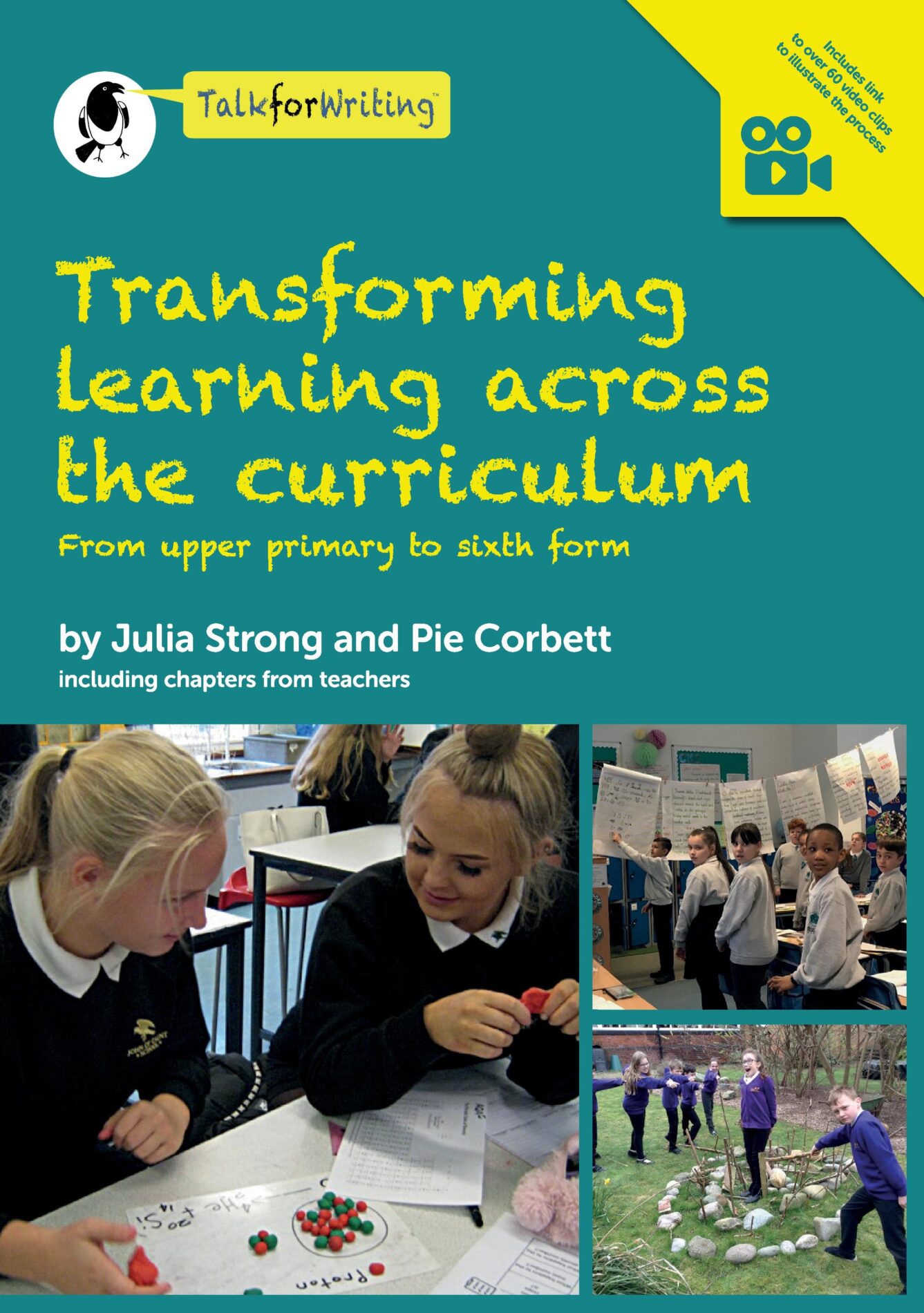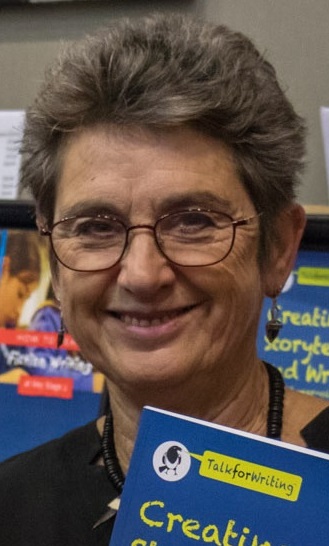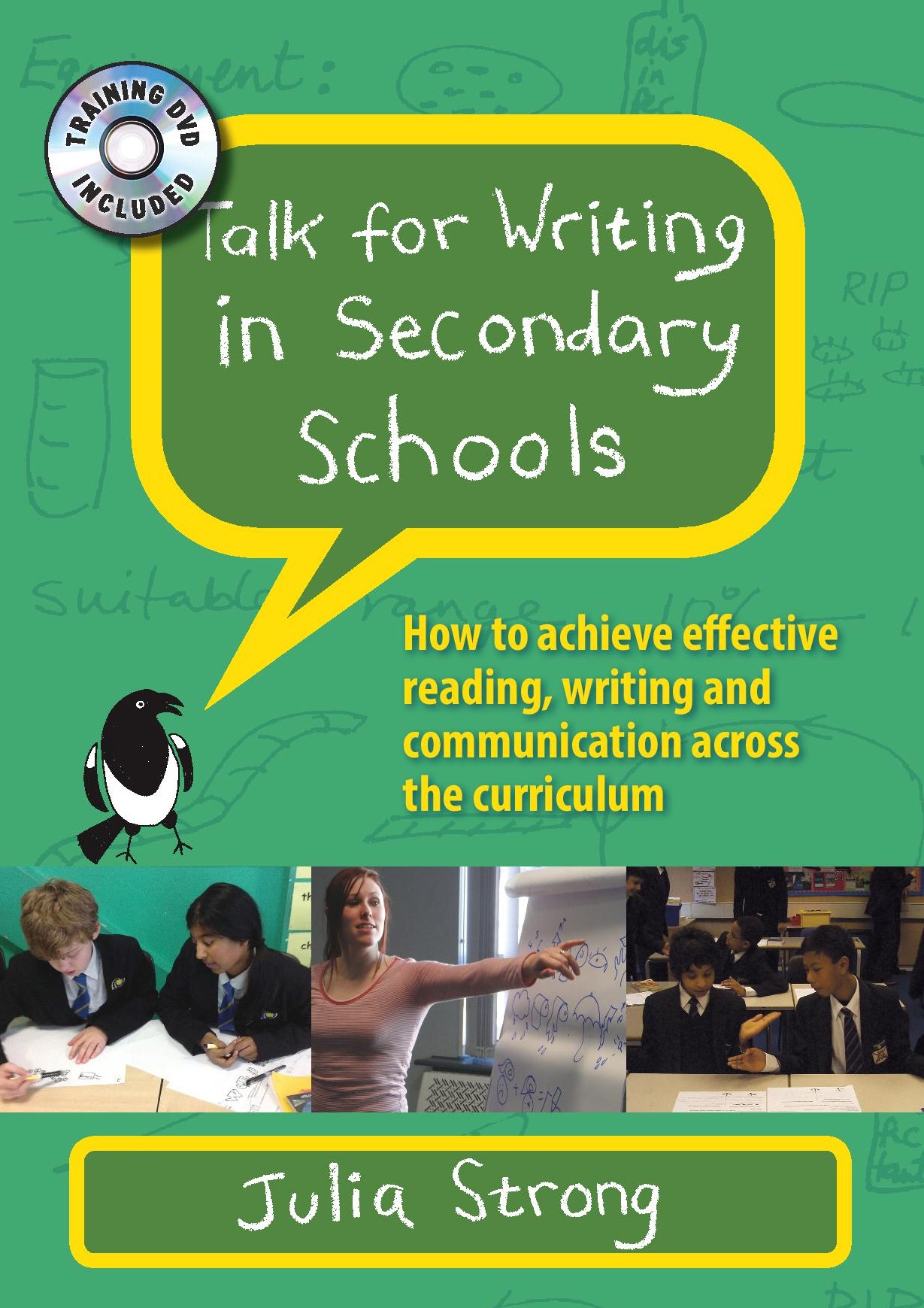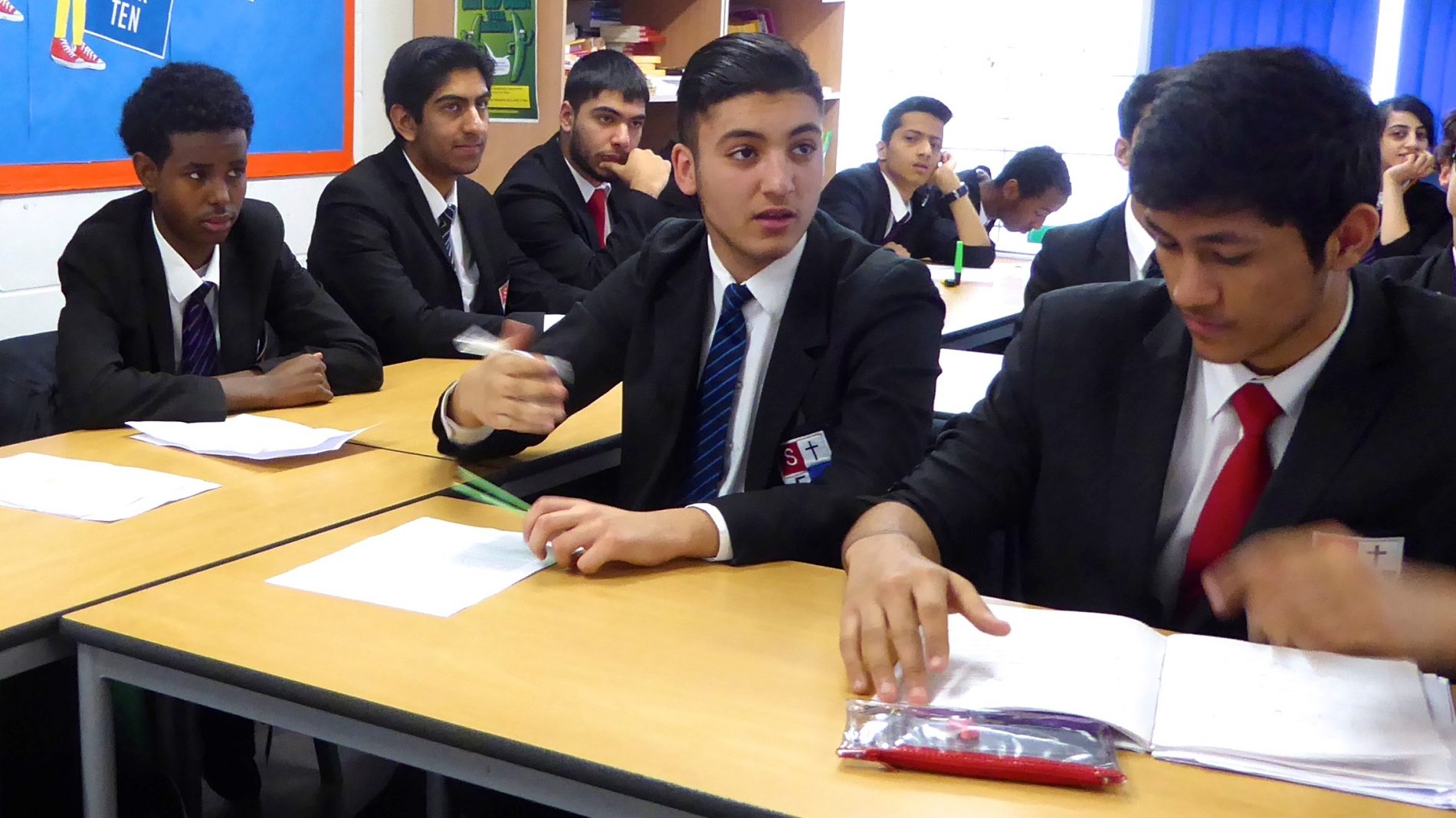
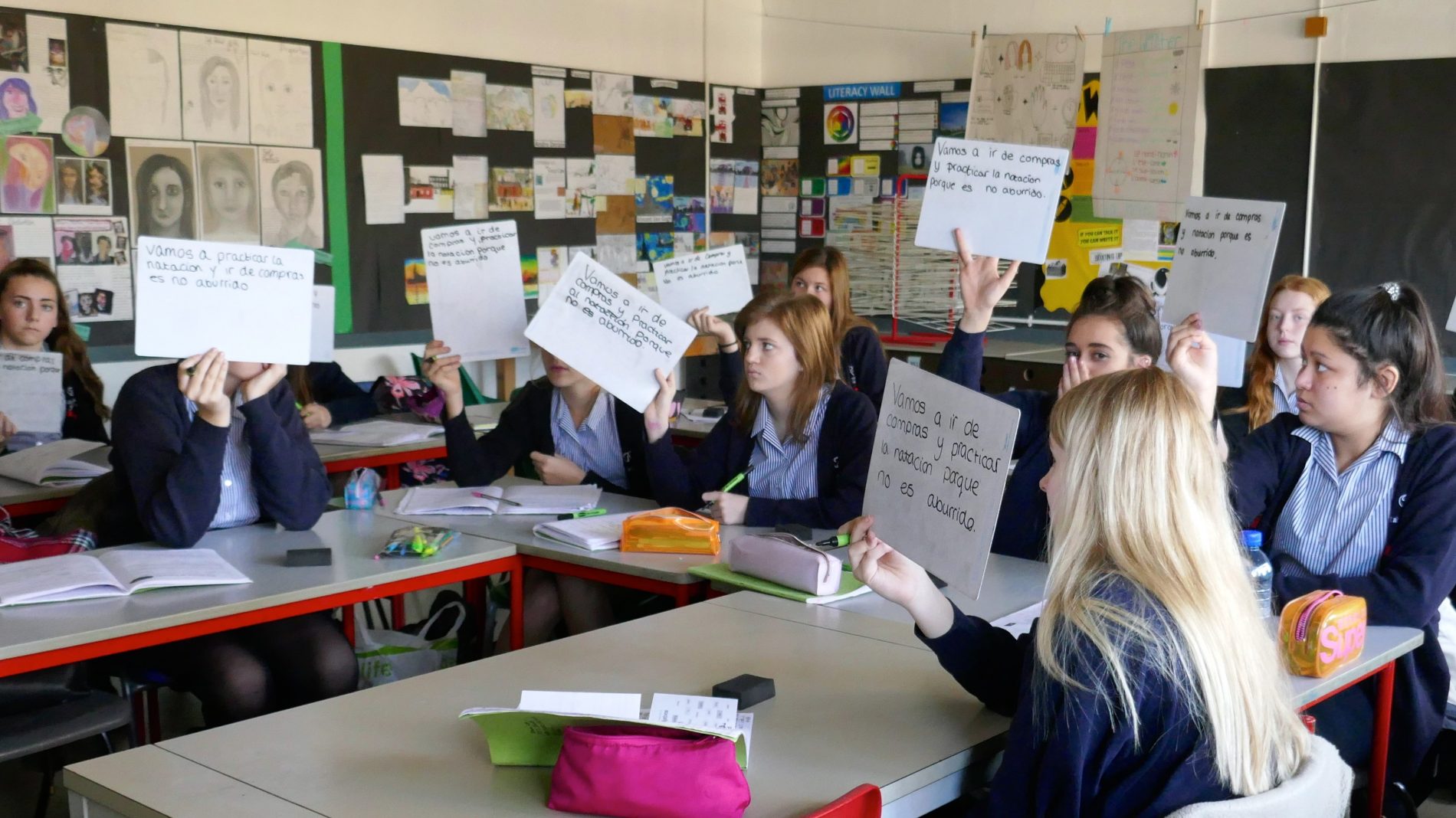
Talk for Writing across the secondary curriculum
The Talk for Writing approach, which is sweeping through the primary sector because of its impact on both pupil attainment and enthusiasm, has now been successfully adapted by Julia Strong’s work with hundreds of secondary schools to meet the needs of the secondary curriculum. Because the secondary approach helps teachers of all subject areas focus on the vocabulary and sentence patterns of their subjects, all teachers can see how the approach is relevant to them.
Talk for Writing is an engaging teaching framework, based on the principles of formative assessment and interactive learning. It provides a flexible process for developing understanding and expression, moving from imitation to innovation to independent application. In English, it provides a step-by-step approach to creating confident, creative speakers, thinkers, readers and writers. This can be adapted to suit the needs of any other language.
In other subjects across the curriculum, it provides a flexible framework that enables all students to develop the tune of each subject area and co-construct understanding so that they can structure their ideas and express themselves coherently. The fact that similar processes underpin each subject enables students to transfer their understanding of how to express themselves coherently from one subject to another, making it the ideal framework for ensuring that literacy across the curriculum becomes an achievable, meaningful goal.
“The students feel pride in their own improvement and success… It’s slashed the time we have to spend on marking… There’s a real sense of ‘Let’s see what we can do now’ – and there’s much more conversation about teaching and learning now”Head of Science, Slough and Eton Business College
The four underpinning principles:

Provide a model
Teachers systematically model the speaking, listening, vocabulary and sentence patterns the students need. When writing or a process is required, teachers provide a model text so that students begin by imitating the model.

Facilitate oral rehearsal
Students internalise the pattern of the language required – they talk the text before they write it.

Make the learning visible
Display work in progress: for example, a word bank, text map, model text, boxed-up structure, toolkit and shared writing to help students innovate on the pattern they have internalised.

Co-construct the learning
The students are involved in activities that help them construct their learning and develop understanding so that they can become independent thinkers, practitioners and writers.
“I talk to the pupils on a regular basis and ask them is the Talk for Writing approach useful? They tell me a resounding ‘Yes’. It is very useful. It helps them to learn and it’s been an ideal vehicle for us”Paul McAteer, Former Headteacher, Slough and Eton Business School
Training options for secondary level
Training courses
The training we offer uses the Talk for Writing approach to help teachers to support students in becoming powerful communicators across the curriculum. Julia has been focusing on this area for many years now and what has found that, if a school really wants to improve literacy standards, this involves adapting the way that teachers teach their subject to ensure that the students can talk confidently about whatever subject they are being taught about prior to being expected to write about it. The approach also improves reading because it involves analysing exemplar text, widening understanding through wider reading and re-reading writing to understand how it can be improved. Obviously changing practice cannot be done overnight and the approach can only be developed through practice rather than through policy – the policy being based on the best of the practice.
The actual training is very interactive. It includes introducing the Talk for Writing approach and then taking teachers through the five steps below for amending units so that they experience the sort of activities the students would experience:
A. Creating the right exemplar text
B. Warming up the words
C. Warming up the phrases
D. Internalising the pattern of the text
E. Consolidating learning
Julia use examples from every curriculum area so all teachers can see how the approach applies to them. The afternoon session of a training day is usually a workshop session that allows teachers to start working out how they would adapt a unit of work in the light of what they have heard in the morning session.
There are two approaches that we have found work well; one based on first focusing on a group of teacher enthusiasts, and the other beginning with the whole staff. The group approach involves a day’s training for a group of teachers from a range of curriculum areas, including one member of senior management who can help lead the initiative. The group can then start to spread the approach in their areas once they have developed it in their own classrooms. This approach works best when there is a second training day for the team with enough space in between the days to allow the teachers to put ideas into practice. The second approach begins with training the whole staff. This can then be followed up either by a group of enthusiasts who could then receive further support in how to take the ideas forward or by a member of senior management who can lead the development of the approach within the school.
Either approach works if it is followed through appropriately. Brighton and Hove Authority chose to involve all their schools using the enthusiasts’ approach with three days’ training over a year and now all the secondary schools in the authority have included developing the Talk for Writing approach in their development plans.
In addition, Julia provides training for local authorities, often including primary as well as secondary delegates. In which case, there is an additional focus on primary secondary transfer as well as the usual focus on showing secondary colleagues what high standards of literacy teaching primary colleagues can achieve. Julia also provides training for English departments which, wherever possible, is strengthened by including teachers from local primary schools. She also offers training for specific curriculum areas such as science or maths.




